Have you ever noticed how some animals just seem to click with each other, forming instant bonds and becoming the best of friends? Well, when it comes to our beloved hedgehogs, they can be a bit more hesitant about socializing with other pets.
But fear not! We’re here to help you navigate the world of hedgehog socialization. In this article, we’ll share 15 tips that will make your hedgehog feel right at home with their furry companions.
So let’s get started on this exciting journey towards friendship and belonging!
Key Takeaways
- Hedgehogs communicate through body language, such as flat spines and curling into a ball.
- Gradual introductions and positive reinforcement techniques can foster a harmonious relationship between hedgehogs and other pets.
- Proper dog training and understanding of hedgehog behavior are key when introducing hedgehogs to dogs.
- Creating a safe environment and using trust-building techniques promote positive interactions and strengthen the bond among hedgehogs and other pets.
Understanding Hedgehog Behavior
Understanding hedgehog behavior is essential for successfully introducing them to other pets. Hedgehogs have their own unique way of communicating, and it’s important to understand these signals in order to ensure a positive interaction between them and other animals.
One key aspect of hedgehog communication is through body language. When they are relaxed and comfortable, their spines lie flat, and they may even curl up into a ball when feeling threatened or scared. It’s crucial to recognize signs of stress in hedgehogs, such as excessive quilling or hissing noises. These behaviors indicate that the hedgehog is feeling anxious or uncomfortable.
Another important factor in understanding hedgehog behavior is recognizing signs of stress in them. Stress can manifest in various ways, including loss of appetite, excessive scratching or biting at themselves, and aggressive behavior towards other animals or humans. It’s essential to create a calm and safe environment for your hedgehog before attempting any introductions with other pets.
By understanding hedgehog communication and recognizing signs of stress, you will be better equipped to introduce your hedgehog to other pets successfully. This knowledge will help you anticipate potential issues and take necessary steps to prevent any conflicts or harm during the introduction process.
Remember that each animal has its own unique personality, so taking things slow and allowing for proper adjustment time is vital for creating harmonious relationships between your hedgehog and other pets in the household.
Introducing Hedgehogs to Other Pets
When it comes to introducing a hedgehog to other pets, such as dogs and cats, there are several important factors to consider.
Firstly, it’s crucial to ensure the safety of both animals by closely monitoring their interactions and providing a secure environment.
Additionally, understanding each pet’s behavior and temperament is vital in order to anticipate any potential issues or conflicts that may arise during the introduction process.
Lastly, gradual introductions and positive reinforcement techniques can help foster a harmonious relationship between hedgehogs and other pets, allowing them to coexist peacefully in the same household.
Hedgehog and Dog
If you’re introducing your hedgehog to a dog, it’s important to take things slow and monitor their interactions closely. Dogs are known for their hunting instincts, so it’s crucial to ensure the safety of both animals during this process.
Here are some tips to help you with introducing your hedgehog to your dog:
Gradual introduction: Start by allowing them to sniff each other through a barrier, like a baby gate or crate.
Positive associations: Reward both the dog and the hedgehog for calm behavior around each other using treats or praise.
Supervision: Always supervise their interactions closely, especially in the beginning stages.
Introducing a hedgehog to a dog requires patience and careful observation. By following these tips, you can create positive experiences for both pets and foster a harmonious relationship between them. Remember, proper dog training and understanding of hedgehog behavior is key in ensuring their compatibility.
Hedgehog and Cat?
Introducing a hedgehog to a cat may require gradual introduction and close supervision to ensure their safety and compatibility. When bringing these two pets together, it is important to follow certain techniques to establish boundaries and promote a positive relationship.
Firstly, start by keeping them in separate rooms for initial introductions. This allows them to become familiar with each other’s scent without direct contact. Gradually introduce them by swapping bedding or using a mesh barrier that allows visual interaction but prevents physical contact.
Supervise their interactions closely at all times. Cats are natural hunters, so it’s crucial to ensure the hedgehog’s safety. Provide hiding spots and elevated areas for the hedgehog to retreat if needed.
Additionally, create positive associations by rewarding both pets with treats and praise during calm interactions. This helps them associate each other’s presence with positive experiences.
Creating a Safe Environment for Socialization
To ensure a safe environment for socialization, it’s important to create a designated space for your hedgehog and other pets to interact. This will not only help prevent any potential accidents or conflicts but also foster positive interactions between them.
Here are three trust-building techniques that can help you create a safe environment for socialization:
Gradual Introductions: Start by allowing your hedgehog and other pets to observe each other from a distance. Then, gradually decrease the separation until they feel comfortable enough to interact closely. This gradual approach helps build trust and reduces the likelihood of aggressive behavior.
Positive Reinforcement: Use treats or rewards to reinforce desired behaviors during interactions. For example, reward both your hedgehog and other pet when they display calm and friendly behavior towards each other. This positive reinforcement encourages them to associate each other’s presence with pleasant experiences.
Supervision: Always supervise interactions between your hedgehog and other pets, especially in the early stages of socialization. Be ready to intervene if any signs of aggression or distress arise. By closely monitoring their interactions, you can ensure their safety while building trust over time.
Creating a safe environment for socialization is crucial in promoting harmonious relationships between your hedgehog and other pets. With these trust-building techniques, you can facilitate positive interactions and strengthen the bond among all your furry friends.
Gradual Introductions: Taking It Slow
Start by allowing them to observe each other from a distance and gradually decrease the separation until they feel comfortable enough to interact closely. Taking time and building trust are crucial steps in introducing your hedgehog to other pets. Socializing your hedgehog can be an exciting journey, but it requires patience and understanding.
When introducing your hedgehog to another pet, it’s important to take things slow. Start by placing their enclosures near each other so they can get used to the presence of the other animal. Allow them time to observe each other without direct contact. This gradual exposure helps them become familiar with each other’s scent and behavior.
As they begin to show signs of comfort, you can start supervised interactions. Keep a close eye on their body language and reactions during these initial meetings. If any signs of stress or aggression occur, separate them immediately and try again later.
Remember that every hedgehog is unique, and some may take longer than others to warm up to new companions. Be patient and give them the space they need while continuing with supervised interactions. Through consistent positive experiences, trust will slowly build between your hedgehog and their new furry friend.
Building trust takes time, but with proper introductions and patient guidance, you can create harmonious relationships between your hedgehog and other pets in your household.
Monitoring Interactions: Signs of Compatibility
Keep a close eye on the body language and reactions of both animals during supervised interactions to determine if they’re compatible. This is crucial for promoting positive interactions between your hedgehog and other pets. Here are some key points to consider:
Eye contact: Pay attention to how the animals make eye contact with each other. Direct, prolonged eye contact can indicate aggression or dominance.
Posture: Observe the posture of both animals. A relaxed, open posture indicates comfort and acceptance, while puffed-up fur or defensive stances may suggest tension or fear.
Vocalizations: Listen for any vocal cues during their interaction. Soft chirping sounds from your hedgehog can indicate contentment, while growls or hisses may signal discomfort or aggression.
By paying close attention to these signals, you can better understand the dynamics between your hedgehog and other pets. Remember that not all animals will get along, and it’s important to prioritize their safety and well-being above all else. If you notice any signs of distress or hostility, it may be best to separate them and seek professional guidance on further introductions.
Supervised Playtime: Setting Boundaries
When introducing your hedgehog to other pets, it’s important to establish clear boundaries during supervised playtime. Boundary reinforcement is crucial in ensuring the safety and well-being of all animals involved.
Hedgehogs have unique needs and behaviors that may not align with those of other pets, so setting expectations from the start is vital.
During supervised playtime, it’s essential to create a designated space where interactions can occur. This could be a neutral area or one where your hedgehog feels comfortable. Use physical barriers like baby gates or pet enclosures to help define these boundaries.
Setting clear expectations for both your hedgehog and the other pets is key. Educate yourself on their behaviors and body language cues to better understand their comfort levels. For example, if your hedgehog starts showing signs of stress, such as curling into a ball or hissing, it’s important to intervene and separate them immediately.
Remember, each animal has its own personality and temperament, so not all introductions will go smoothly right away. It may take time for them to adjust and form positive associations with each other.
Providing Separate Spaces for Each Pet
To ensure the well-being of all pets, it’s important to provide separate spaces for each animal in your home. This ensures that each pet has their own territory where they can feel safe and secure. It also helps prevent any potential conflicts or territorial disputes that may arise when multiple animals share the same space.
Here are three key reasons why providing separate spaces for your pets is crucial:
Reduced stress: Having their own designated area allows each pet to have a sense of ownership and control over their environment. This can help reduce stress and anxiety, promoting better overall mental and emotional well-being.
Prevention of aggression: Animals have different personalities and boundaries. By providing separate territories, you minimize the likelihood of one pet encroaching on another’s space, which could lead to aggressive behaviors.
Supervised interactions: While it’s important for pets to have their own spaces, supervised interactions between them are also valuable. These controlled encounters allow pets to socialize and bond under your watchful eye, ensuring their safety while fostering positive relationships.
Positive Reinforcement: Rewarding Good Behavior
Make sure you use positive reinforcement to reward your pets’ good behavior. It’s an effective training technique that can help strengthen the bond between you and your furry friends. Positive reinforcement involves providing a reward or praise when your pet exhibits desirable behavior, such as following commands or interacting well with other pets.
Using positive reinforcement not only encourages good behavior but also creates a positive association in your pet’s mind. This makes them more likely to repeat the behavior in the future. When rewarding your pets, it’s important to choose something they find rewarding, whether it be treats, verbal praise, or even playtime.
To effectively train using positive reinforcement, consistency is key. Make sure to reward good behavior immediately after it occurs so that your pet can make the connection between their actions and the reward. Additionally, be clear and consistent with the cues or commands you give them.
Remember that every pet is unique and may respond differently to various rewards and training techniques. Take the time to understand what motivates your individual pets and adjust your approach accordingly.
Patience and Persistence: Building Trust
Be patient and persistent as you work on building trust with your hedgehog. Building trust takes time, but it is essential for a strong bond between you and your pet.
Here are some tips to help you gain your hedgehog’s confidence:
Create a safe environment: Ensure that your hedgehog feels secure in its surroundings by providing a comfortable enclosure with plenty of hiding spots.
Offer treats: Use positive reinforcement to reward good behavior and create positive associations with interaction. Treats can be a great way to entice your hedgehog and build trust.
Handle with care: Start by gently touching your hedgehog while it is relaxed, gradually increasing the amount of contact over time. This will help them become accustomed to human touch.
Building trust is a gradual process, so don’t rush it. Take small steps and celebrate each milestone along the way. Remember, every hedgehog is unique, so be patient and adapt your approach accordingly.
With consistent effort and understanding, you will soon have a strong bond with your beloved hedgehog.
Bonding Through Mealtime: Joint Feeding Sessions
During joint feeding sessions, share a meal with your hedgehog to strengthen your bond. Not only does this activity provide nourishment for your pet, but it also creates an opportunity for you to spend quality time together. Joint feeding benefits both you and your hedgehog by fostering a sense of trust and companionship.
When engaging in joint feeding sessions, it is important to choose appropriate foods for your hedgehog. Opt for specially formulated hedgehog food that meets their nutritional needs. Avoid giving them foods that are high in fat or sugar, as these can be harmful to their health.
Additionally, consider incorporating alternative bonding activities alongside joint feeding sessions. Taking your hedgehog out for supervised playtime in a safe and secure environment can help build familiarity and trust between you both. Gently petting or stroking them while they explore can further enhance the bond.
Remember to approach each interaction with patience and respect for your hedgehog’s boundaries. Some may take longer than others to warm up to the idea of sharing a meal together or participating in other bonding activities. Be consistent, gentle, and understanding throughout the process.
Scent Swapping: Getting Familiar With Each Other’s Smell
When it comes to bonding with our hedgehogs, scent recognition plays a crucial role. By familiarizing ourselves and our hedgehogs with each other’s smells, we can create a sense of comfort and security.
Creating a familiar environment that includes the scents of both us and our hedgehogs can help them feel more at ease and promote a stronger bond between us.
Gradually introducing new scents, such as those of other pets or items in our home, can also be beneficial in helping our hedgehogs adapt to their surroundings and build trust in their new environment.
Importance of Scent Recognition
Make sure to let your hedgehog sniff and become familiar with the scents of other pets in the house. Scent recognition plays a crucial role in facilitating bonding and building trust between animals. By allowing your hedgehog to explore the scents of other pets, it helps them become more comfortable and accepting of their presence.
Here are three benefits of scent recognition for fostering positive relationships between pets:
Familiarity: When hedgehogs are exposed to the scents of other pets, they start recognizing them as part of their environment. This familiarity reduces anxiety and creates a sense of belonging.
Bonding: Through scent recognition, animals communicate and establish connections with each other. Hedgehogs can develop friendly associations by associating pleasant smells with companionship.
Trust-building: By gradually exposing your hedgehog to different pet smells, you’re building trust and helping them understand that these scents pose no threat. This process promotes harmonious coexistence among all your furry friends.
Creating a Familiar Environment
Now that we understand the importance of scent recognition for our hedgehogs, let’s move on to creating a comfortable space and establishing a routine.
To ensure your hedgehog feels safe and secure, it’s essential to provide them with a designated area where they can retreat to when needed. This could be a cozy hideout or a small enclosed space with soft bedding. By creating this familiar environment, your hedgehog will feel more at ease during social interactions.
Additionally, establishing a routine is crucial for their well-being. Hedgehogs thrive on predictability and structure, so try to feed them at the same time each day and provide regular play sessions in their designated area. Consistency in their daily activities will help reduce stress and anxiety, making it easier for them to bond with other pets.
Gradual Scent Introduction
To help your hedgehog feel more comfortable around new scents, gradually introduce them by placing items with different smells near their designated area. This gradual desensitization process can help your hedgehog become familiar with various scents and reduce any potential anxiety they may have.
Here are some effective scent introduction techniques:
Use a cloth or towel: Rub the cloth on different surfaces or objects that have distinct smells, such as other pets’ bedding or toys.
Introduce food with new scents: Place treats or food with unique aromas near your hedgehog’s enclosure to associate positive experiences with those scents.
Incorporate natural elements: Bring in branches, leaves, or flowers from outside to expose your hedgehog to outdoor scents in a controlled environment.
Grooming Sessions: Promoting Social Bonds
During grooming sessions, you’ll want to gently brush your hedgehog’s quills to promote social bonds with other pets. Not only does this routine help keep your hedgie’s coat clean and healthy, but it also provides an opportunity for interactive play and bonding with other animals in your household.
When brushing your hedgehog, remember to be gentle and patient. Start by using a soft-bristled brush or a toothbrush specifically designed for small animals. Stroke the quills in the direction they naturally lie, avoiding any rough or forceful movements that could cause discomfort.
As you groom your hedgehog, consider involving other pets in the process. This can help create positive associations between them and promote social interaction. Allow them to observe from a safe distance at first, gradually bringing them closer as your hedgehog becomes more comfortable.
Encourage interactive play during grooming sessions by introducing toys or treats for both your hedgehog and the other pets involved. This not only makes the experience enjoyable for everyone but also reinforces positive interactions between them.
Avoiding Stressful Situations
When it comes to introducing new pets or animals to our hedgehogs, we want to ensure their safety and minimize any potential conflicts that may arise.
In this discussion, we will explore safe introduction techniques and strategies that can help create a positive and stress-free environment for all parties involved.
Safe Introduction Techniques
Introducing your hedgehog to other pets can be done safely by following proper techniques. It’s important to take the time and effort to ensure a smooth and stress-free introduction for all animals involved. Here are three gradual introduction techniques and safe bonding methods that can help create a harmonious environment:
Separate Living Spaces: Begin by keeping your hedgehog and other pets in separate living spaces, allowing them to become familiar with each other’s scent without direct contact.
Controlled Encounters: Once they are comfortable with each other’s presence, you can start supervised interactions in a controlled environment. Use barriers or cages to maintain safety while allowing them to get closer and observe each other.
Positive Reinforcement: Reward good behavior during their interactions with treats or praise. This will help associate positive experiences with being around each other.
Minimizing Potential Conflicts
Now that we’ve learned about safe introduction techniques for our hedgehogs, let’s focus on minimizing potential conflicts and promoting harmony between our pets.
It’s important to create a peaceful environment where all animals feel comfortable and secure. One way to achieve this is by gradually introducing them to each other’s scents. You can do this by swapping bedding or using a cloth to rub each pet and then placing the cloth in the other animal’s living area. This helps familiarize them with each other’s scent without direct contact, reducing the chances of aggression or fear.
Another tip is to provide separate spaces for each pet initially. This allows them to have their own territory and reduces the risk of territorial disputes. Slowly, you can start supervised interactions in neutral areas, such as a playpen or a room both pets are unfamiliar with.
Seeking Professional Help: Animal Behaviorist or Trainer
If your hedgehog is not making progress in socializing with other pets, it may be beneficial to seek professional help from an animal behaviorist or trainer. These experts have extensive knowledge and experience in animal training techniques and can provide valuable guidance to help your hedgehog overcome any obstacles in their socialization journey.
Here are three reasons why seeking professional help can be beneficial:
Expertise: Animal behaviorists and trainers have a deep understanding of animal behavior and psychology. They can assess your hedgehog’s specific needs, identify any underlying issues, and develop a customized training plan that aligns with positive reinforcement principles.
Tailored Approach: Every hedgehog is unique, and what works for one may not work for another. Professionals can tailor their approach to suit your hedgehog’s personality, preferences, and comfort level. This personalized guidance ensures that you are providing the most effective strategies for successful socialization.
Problem Solving: If you’re facing challenges during the socialization process, professionals can offer solutions based on their expertise. They can troubleshoot issues such as fearfulness, aggression, or lack of interest from other pets, helping you navigate through potential roadblocks.
Celebrating Milestones: Recognizing Progress
When it comes to achieving our goals, it’s important to acknowledge the small victories along the way. By recognizing and celebrating these achievements, we can boost motivation and maintain a positive mindset throughout our journey.
Whether it’s finishing a challenging task or reaching a significant milestone, celebrating together as a team can create a sense of camaraderie and foster a supportive environment for continued success.
Acknowledge Small Victories
After each successful interaction with other pets, make sure to acknowledge your hedgehog’s small victories. Building trust gradually is an essential part of socializing your hedgehog, and recognizing achievements along the way will help strengthen that bond.
Here are three ways to acknowledge your hedgehog’s progress:
Provide treats: Reward your hedgehog with a tasty treat after a positive interaction with another pet. This reinforces the behavior and shows them that their efforts are appreciated.
Verbal praise: Hedgehogs may not understand words like dogs or cats do, but they can still recognize tone and enthusiasm in our voices. Use positive reinforcement by praising them verbally when they display good behavior during interactions.
Physical affection: Hedgehogs may not be as cuddly as some other pets, but they still enjoy gentle touch and strokes. After a successful interaction, give them some extra love and attention to let them know they did well.
Celebrate Achievements Together
Celebrating achievements together with your hedgehog is a great way to strengthen the bond between you and create a positive socialization experience. Hedgehogs, like any other pets, thrive on social interaction and positive reinforcement. By acknowledging their accomplishments and celebrating them as a team, you are not only fostering a sense of belonging but also encouraging further growth and development.
One effective way to celebrate achievements is through celebratory rewards. These can be in the form of treats or toys that your hedgehog enjoys. For example, if your hedgehog successfully completes an obstacle course or learns a new trick, you can reward them with their favorite treat or toy. This reinforces positive behavior and creates a sense of accomplishment for both you and your hedgehog.
Additionally, incorporating group activities into your celebration can enhance the bonding experience. You can invite friends or family members who are familiar to your hedgehog to join in the celebration. This not only provides an opportunity for your hedgehog to interact with others but also strengthens the overall socialization process.
Frequently Asked Questions
Can Hedgehogs Be Safely Introduced to Reptiles or Amphibians as Pets?
Introducing hedgehogs to reptiles or amphibians requires understanding potential risks and taking precautions. Creating a safe and supervised environment is key for hedgehog-reptile interactions. We can help you navigate this process successfully.
How Long Does It Typically Take for Hedgehogs to Form a Bond With Other Pets?
It typically takes some time for hedgehogs to form a bond with other pets. The bonding timeline varies depending on the individual hedgehog and the approach used when introducing them to other animals.
Are There Any Specific Signs or Behaviors That Indicate a Hedgehog and Another Pet Are Compatible?
There are specific signs and behaviors that indicate compatibility between hedgehogs and other pets. It’s important to introduce hedgehogs to reptiles or amphibians as pets in a gradual and supervised manner to ensure a positive bond.
What Should I Do if My Hedgehog and Other Pet Do Not Get Along After Several Attempts at Socialization?
If our hedgehog and another pet don’t get along after multiple attempts at socialization, we should first ensure their safety. Then, it may be best to consult a veterinarian or animal behaviorist for guidance on managing aggression between hedgehogs and other pets.
Are There Any Risks or Potential Dangers Associated With Socializing Hedgehogs With Other Pets?
So, when it comes to socializing hedgehogs with other pets, there are indeed potential dangers to consider. However, by following proper introductions and taking necessary precautions, you can safely help your hedgehog bond with its furry companions.
Conclusion
In conclusion, socializing your hedgehog with other pets is no small feat. It requires patience, dedication, and a whole lot of love. But let me tell you, when you see your hedgehog cuddling up with their new furry friends, it’s a sight that will melt your heart.
So don’t give up! Follow these 15 tips and watch the magic happen. Your hedgehog will become the social butterfly of your household in no time. Get ready for some seriously adorable pet bonding moments!


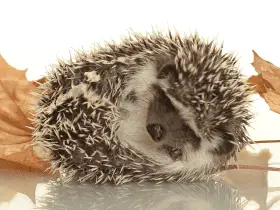
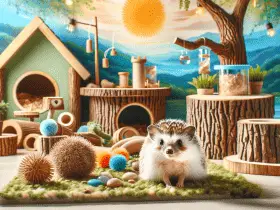





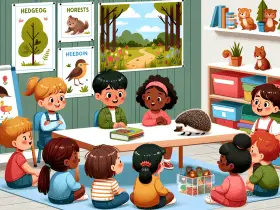
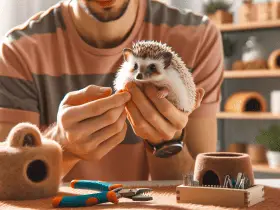




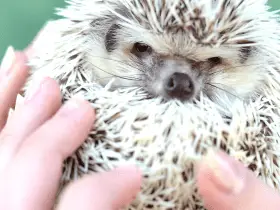




Leave a Reply
View Comments